2022 highlights of a wilder Orkney life (part 1)
2022 was a very happy time for me on my visits to Orkney. I spent hours on the low cliffs and rocks with breeding seabirds in the summer, longing to get just the right shot, and hoping to get good light at just the right time. I was keen to get some more behaviour and action shots, so had to be alert for five seconds of activity in five hours of waiting patiently for something to happen. I just about managed it when this Arctic Skua attacked a Puffin trying to rob it of its fish.
We’re going on a Puffin hunt
A Puffin drops its sand eels while pursued by an Arctic Skua:
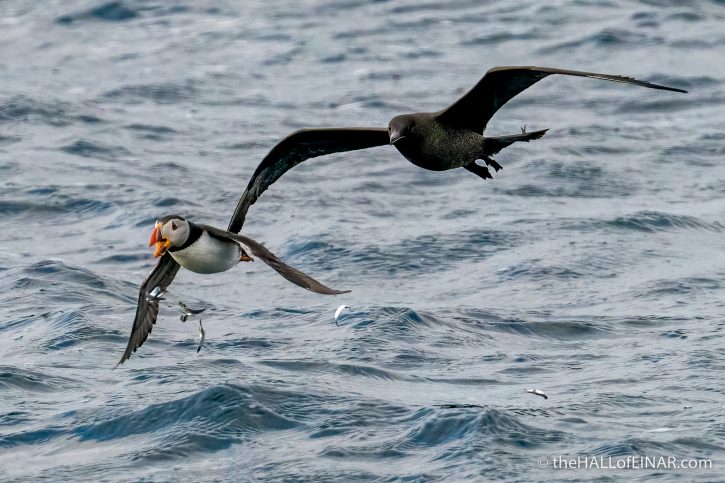
Photography is light and objects, and there’s little more appealing as an object than a Puffin. They’re constantly entertaining social creatures and while breeding they are all-action. Here’s one I watched in glorious light for hours as it brought home the fish:
Fat Puffling with fish
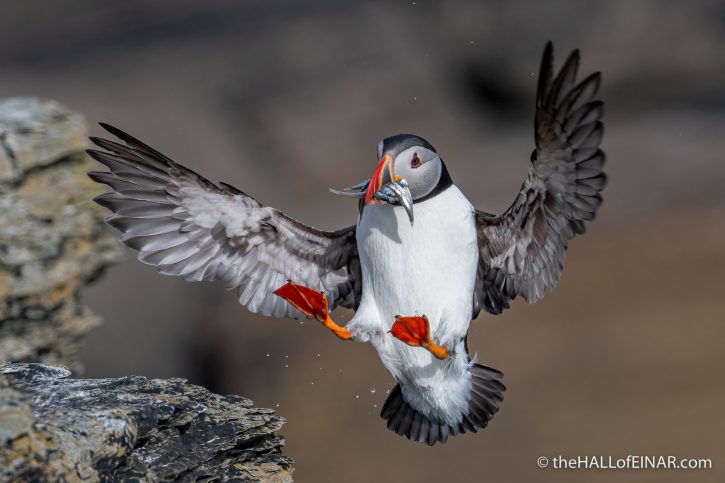
They are sensitive creatures and soon pick up that you are no threat to them if you remain still and don’t approach their nest.
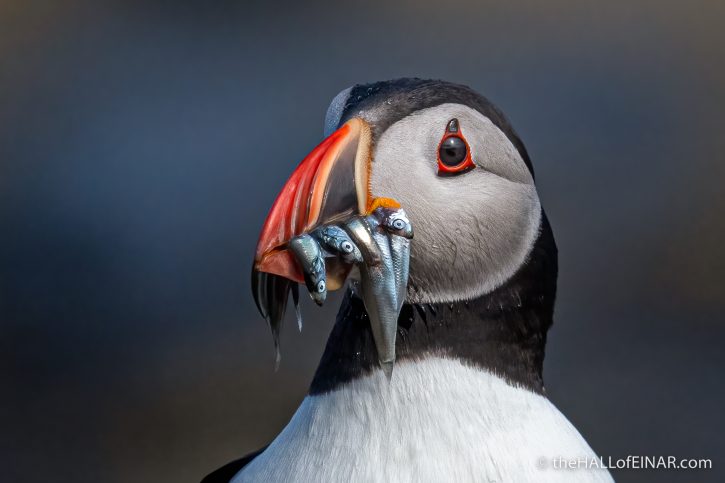
I was delighted to get some portrait shots with sand eels while clinging to this rocky ledge on the west coast of Westray. I particularly liked this one with the bright eyes of the sand eels in the colourful beak.
Heads or tails?
I wasn’t always so lucky with the toss of the coin. Sometimes, I got tails rather than heads.
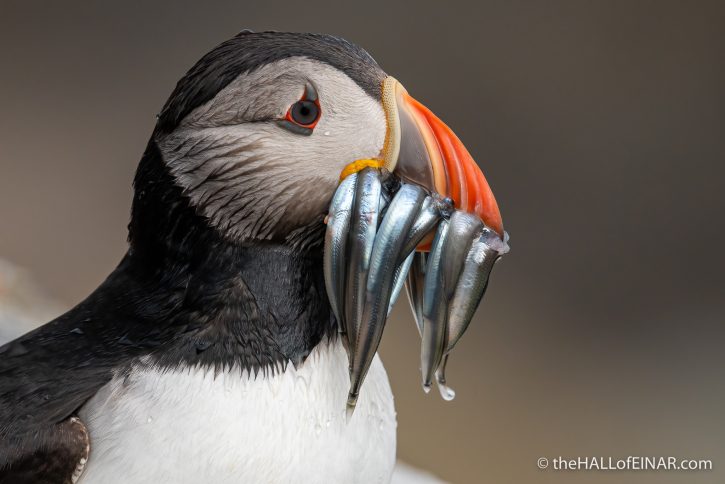
Another reason to love Dunters
In 2022 I had a chance to photograph a Dunter, the Orcadian name for an Eider Duck, while it flew past.
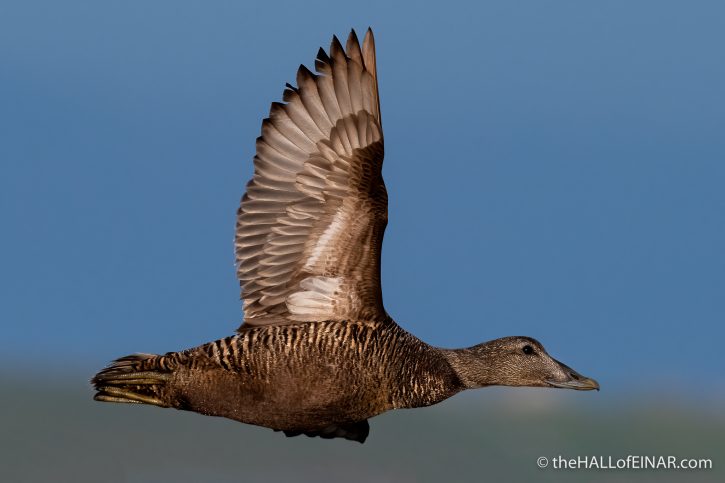
I was delighted with the outcome. Beautiful, aren’t they?
Another species I adored photographing while in flight was the Common Guillemot, in this case, one with a bridled eye:
Bridled Common Guillemots
It took quite a while to find the right angles and times of tides to see the beautiful turquoise water which sometimes surrounds Westray. It helps that there are shell-sand deposits and beaches around the coast which glow with a beautiful luminosity when the light is just right. Then it’s simply the case that I need to sit and wait, fully alert, for a bird to fly in-between me and the turquoise Atlantic Ocean.
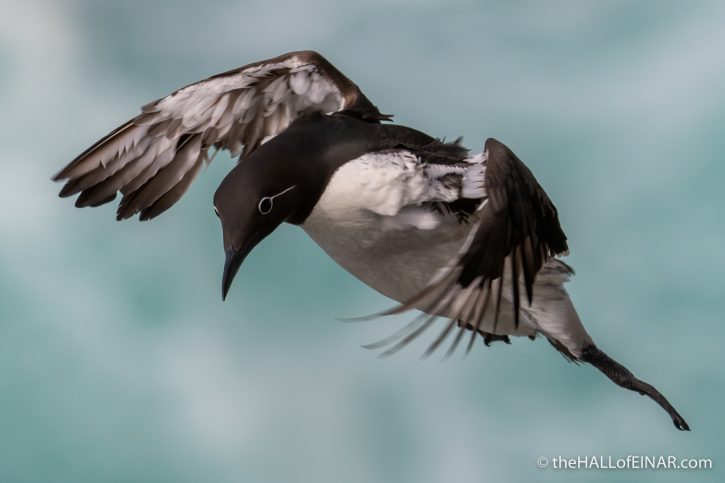
It’s always a relief when I get the images onto my computer screen and see that they are sharp.
Scolder
I’ve been scolding myself for missing some possible action shots, so in 2022 I honed my reactions to anticipate any action which may suddenly appear in the skies above me. I’ve not had to say, ‘I had the wrong settings,’ with a doleful face, once. Here’s an Oystercatcher scolding a Great Skua in the blue skies above Westray:
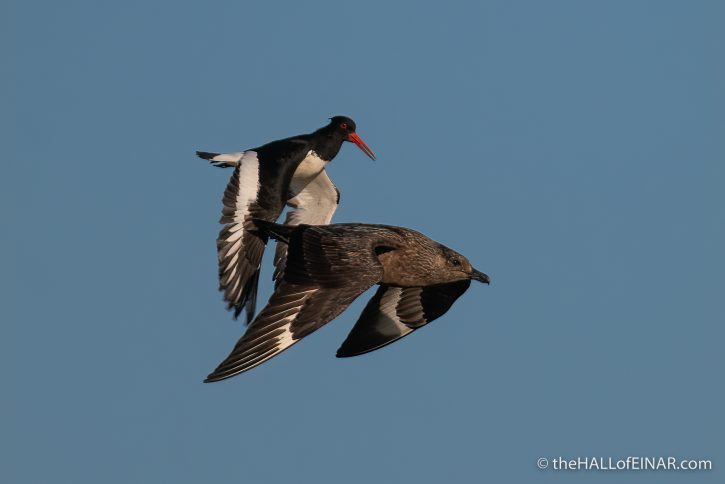
The scolders are at it again
Oystercatchers are persistent and determined to breed unmolested. They have no fear of any other bird in the skies. This Great Black Backed Gull is the largest species of gull in the world, yet was getting chased off the premises.
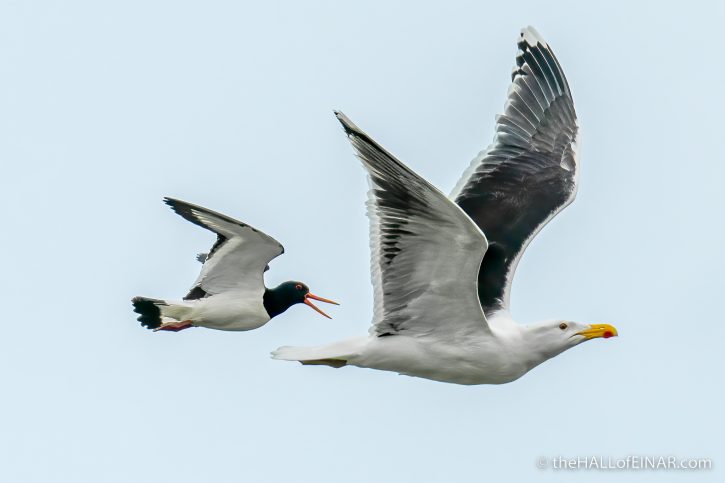
Black Guillemot and fish
There are 19,000 pairs of Black Guillemot in the UK. I enjoyed the company of the ones which breed off the coast of Westray last summer. I lay down on a rock shelf and watched them come in from the sea with a wide variety of fish.
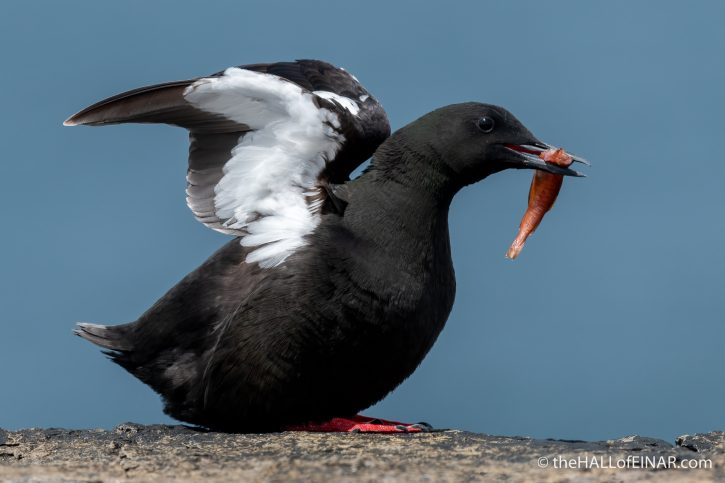
A Red-Necked Phalarope drops in
Red-Necked Phalaropes have no fear of humans. That’s why I managed to get this close while it fed in a pool at the north end of Westray.
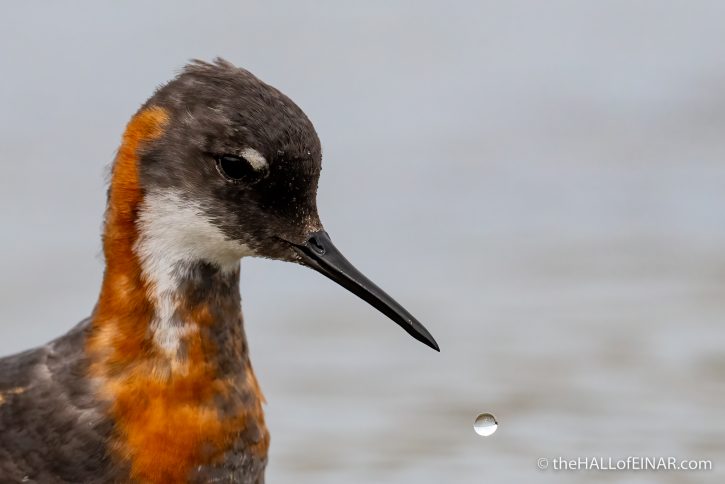
That droplet of water, suspended in mid-air, makes the photograph for me. It’s there because the Red-Necked Phalarope shoves its head in the water looking for aquatic insect larvae and shrimps and the water runs off its head, down its beak and trickles back into the pool.
Pickieterno over the rainbow
When a rainbow appeared, I ran to the best point, with it behind the Arctic Tern’s flightpath back to their colony, and waited for my chance.
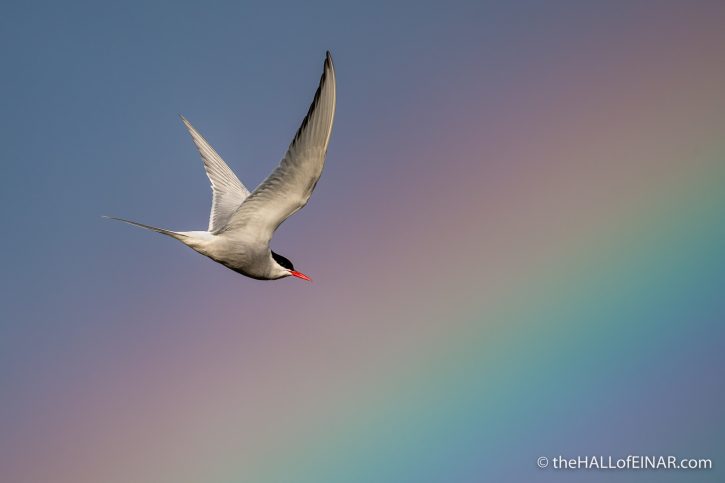
Waves
It was not just the wildlife which attracted me in 2022, it was the sea. Capturing the breaking waves in the turquoise Atlantic was a great experience too.
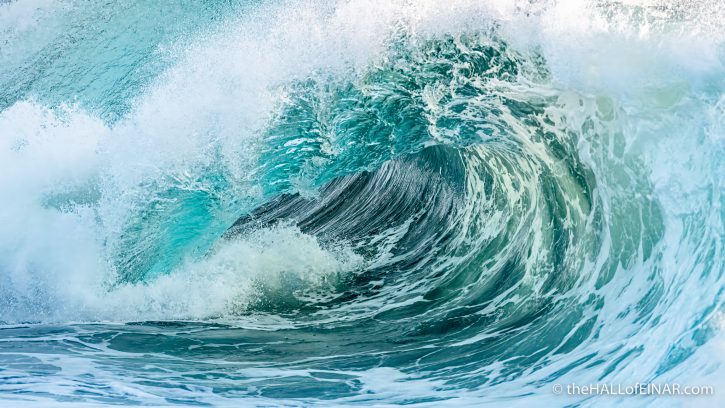
Give ’em enough Phalarope
Perhaps my most exciting find on Westray in 2022 was a female Grey Phalarope in full breeding plumage.
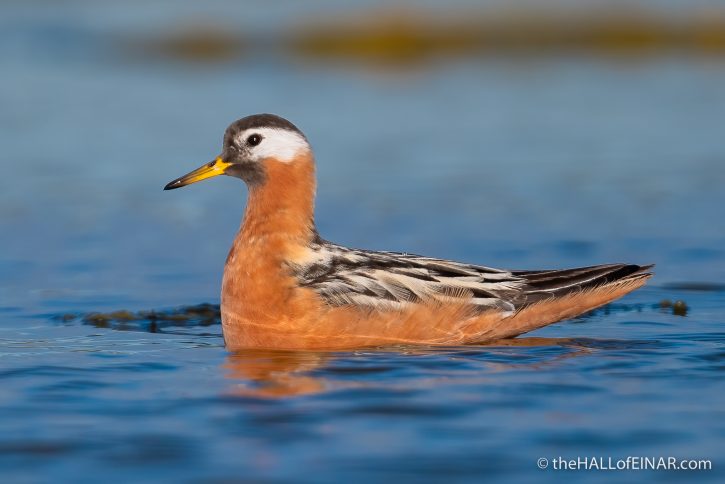
“Grey?” I hear you say, looking at the photograph. Yes, it’s normally a grey bird in the UK, as the females only have breeding plumage in their nesting areas in the Arctic. It’s a bird which hardly anyone has seen while looking like this. Here it is with a necklace of raindrops.
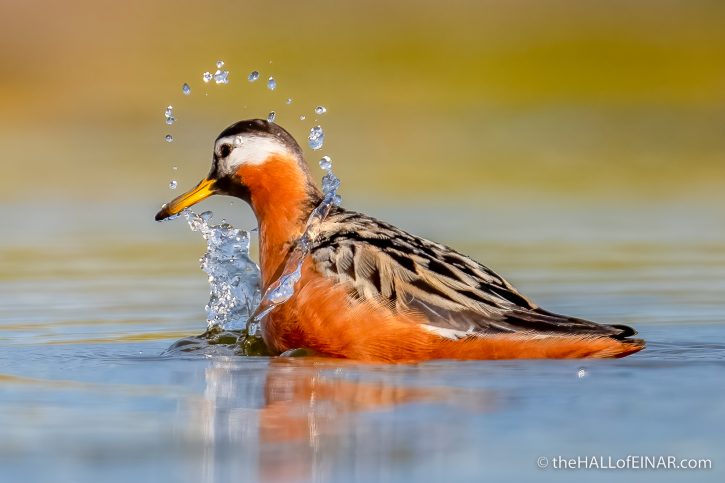
I’ll remember 2022 for all the chances I took rather than those I lost. That’s a positive thing. Thanks very much for being on the journey with me. If you don’t already subscribe, please consider adding your email to receive a refreshing, uplifting and very occasionally controversial blog post in your email inbox at 8:00am each morning (UK time).
Here’s to another year of capturing more wonderful wildlife encounters.